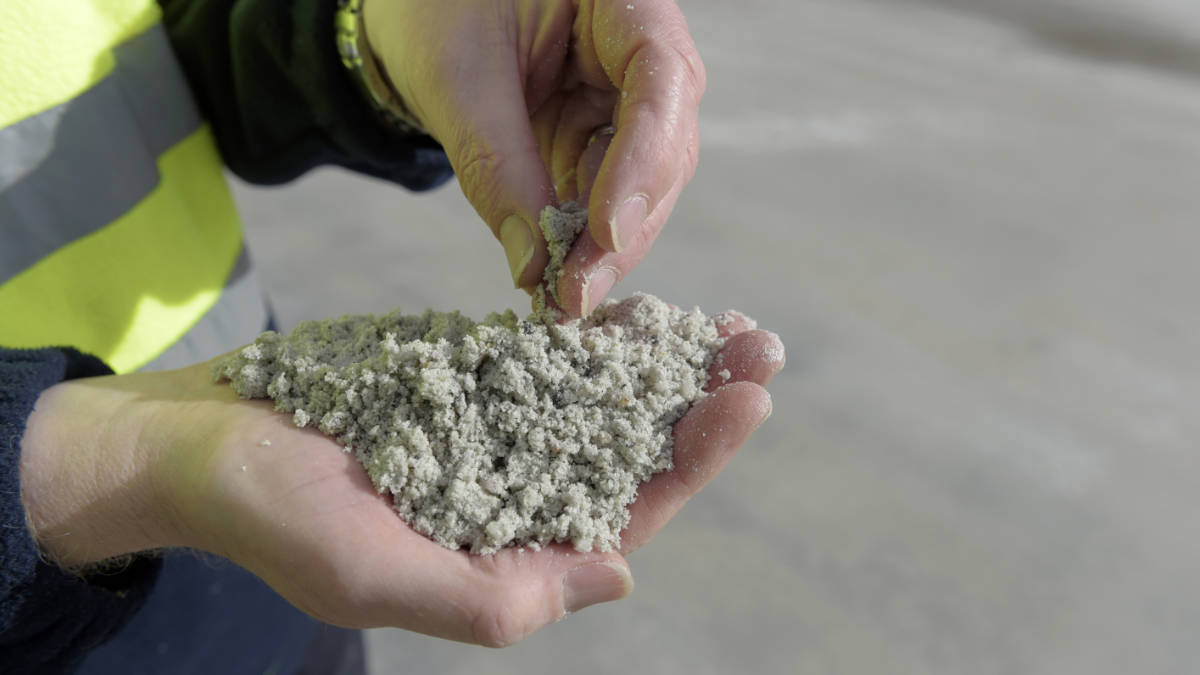Lithium stocking stuffers: These ASX small caps under $15m are active with exploration plans

Pic: Getty Images
Another year is about to wrap up and as a little gift, Stockhead has stuffed into a stocking a collection of ASX lithium companies with plenty of exploration upside.
Lithium’s wild ride is continuing to squeeze the industry with global prices at their lowest since 2021 in the wake of a flood of new supply and softening demand growth from the EV sector.
Many analysts believe prices, which are trading near the marginal cost of production, have already found a bottom as most Australian spodumene producers are now unprofitable at prices below US$1,000/t.
Despite market conditions, the ASX small-cap companies listed below have carried on with exploration plans to get boots on the ground and drill rigs spinning or have kept plugging away with offtake deals and agreements as the year comes to a close.
Lithium Plus Minerals (ASX:LPM)
LPM is rapidly advancing the Lei project in the NT, home to 4.1Mt at 1.43% Li2O, towards near-term production.
Lei is the first of numerous lithium deposits across the Bynoe pegmatite fields where only a small fraction of the total 297km2 tenement area has undergone field exploration, presenting a significant opportunity for new lithium-bearing pegmatite discoveries.
The project is on the northern end of the Litchfield pegmatite belt and shares a border with Core Lithium’s (ASX:CXO) Finniss mine development, which is currently undergoing exploration drilling with results turning up 63m at 1.67% Li2O from 166m, including 20m at 2.09% Li2O from 208m.
A final round of reverse circulation drilling is taking place at the Liana prospect, 3km south of the Lei deposit, targeting mapped pegmatites beneath historical workings that coincide with clear lithium in soil anomalies.
Results are anticipated to be available in early 2025.
First Lithium (ASX:FL1)
Formerly known as Ookami Limited, FL1 has been working on proving up its resources for the release of a maiden resource estimate on its Blakala lithium project in Mali before the end of the year.
Drill hits in the Eastern pegmatite zone have delivered strikes less than 150m from surface including 24m at 1.53% Li2O from 129m and 28.59m at 1.51% Li2O from 117m.
Anything above 1% Li2O is generally considered economic with only a handful of deposits reporting grades upwards of 1.4%. But grade is not everything and metallurgy is critically important.
While prices have long been set on the 6% Li2O benchmark originally delivered from the Greenbushes mine, the company’s Blakala testwork has come in at a solid 6.8%.
Completed to scoping study standards, the concentrate grade didn’t sacrifice metal recoveries, with 80% of lithia reported to the concentrate via flotation.
The testing has confirmed the strong economic potential of the project, the company said.
Pursuit Minerals (ASX:PUR)
PUR has taken meaningful strides towards becoming a commercial producer in one of the world’s top emerging lithium jurisdictions after more than quadrupling its Argentine resource at Rio Grande Sur.
Its resource now sits at 1.104Mt of contained lithium carbonate equivalent, grading 505.8mg/l Li with 591,800t LCE grading 515.1mg/l Li in the indicated category and 512,500t LCE grading 495.4mg/l Li in the inferred category.
This comes ahead of the start of a 250tpa pilot operation in Q1 2025 and has caught the eye of investors – and major miners – who’ve been following lithium news in Argentina since the election of its now President Javier Milei late last year led to dramatic reforms to the country’s resources sector.
“This resource upgrade elevates Pursuit into a league that commands attention from major mining companies seeking significant lithium investments,” MD and CEO Aaron Revelle said.
“The scale of this resource opens the door to significant offtake discussions with several already underway.
Kali Metals (ASX:KM1)
KM1 reached an agreement with lithium giant SQM (the existing joint venture partner in its exploration projects in the Pilbara) in early October to expand the area of the JV and amend terms of the agreement.
SQM will now spend a minimum of $500,000 on exploration by December 15, 2025 to retain its 30% interest in Kali’s DOM’s Hill and Pear Creek tenements and have committed to an additional $1m of expenditure by December 15, 2026 to earn a 50% interest.
Kali’s projects in the Pilbara, dubbed the ‘land of the lithium giants’, are to the east of Pilgangoora and Wodgina and span some 3,854km2 across Australia’s world-leading hard rock lithium fields.
The company was spun out of Kalamazoo and Karora Resources last year and quickly shot up in the days after its listing due to aggressive buying from MinRes.
ASX disclosures show MinRes bought 14.3 million shares or almost 10 per cent of Kali Metals on January 8 and bought more shares a week later, taking its stake to 14% and Kali’s share price to a high of 76c, just two days after listing.
Over the next 12 months the company hopes to narrow in on target generation at the Higginsville project in WA, generate drill-ready targets at Marble Bar and DOM’s Hill and work up drill targets in the southern Lachlan Fold Belt of NSW.
TG Metals (ASX:TG6)
WA explorer TG6 has been focused on lithium-rich spodumene mineralisation at the Burnmeister project in the Lake Johnston area, once known for nickel.
Burnmeister is the largest deposit in the belt with companies like Mineral Resources (ASX:MIN) nearby and Rio Tinto (ASX:RIO) also building a presence.
Best intersections from recent drill hits include 23.5m at 1.52% Li2O from 127.4m, 20m at 1.38% from 120m and 20m at 1.13% from 129m with Burnmeister holding an exploration target of 15.6Mt – 20.1Mt at a grade range of 0.97 – 1.19% Li20.
Metallurgical testwork has the junior thinking it can lower opex with a simple ore sorting and heavy liquid/dense media separation process to produce high-grade, low impurity concentrate up to an impressive 6.31%.
Pre-conditioning of ore feed utilising ore sorting technology achieved an increase in lithia head-grade of 15-39% and iron rejection of 65-70%, a positive start to underpin future engineering studies and confirmatory testwork.
Pan Asia Metals (ASX:PAM)
Pan Asia Metals owns lithium projects in Thailand and Chile, two low-cost regions with established and emerging lithium chemical and electric vehicle manufacturing clusters.
At the RK project in Thailand, the company nearly tripled a lithium anomaly at the KT East prospect to 2.8km x to 2.1km long and 1km wide during rock chip sampling.
The pegmatite dyke swarms remain open in several areas where additional sampling is planned and are stacked and dip moderately, showcasing amenability to open-pit mining with potentially low-strip ratios.
PAM entered into a binding capital commitment agreement with New York based Global Emerging Markets Group for a four year $35m equity investment, providing the company with funding to see it through JORC resource and PFS phases at the Tama Atacama and Rosario copper projects in Chile.
Tama Atacama is one of South America’s largest and most strategically positioned lithium brine projects which is situated at an altitude of 800-1100m with all necessary transport and energy infrastructure.
The project is north of Chile’s lithium chemical refining hub in Antofagasta, with access by rail and road, and only 75km from Iquique, a well-equipped coastal city with a population of 200,000, a deep water bulk and container port.
Power Minerals (ASX:PNN)
Power and lithium extraction tech provider Heng Li Technology completed due diligence for the proposed joint venture for the funding and development of the Pular lithium project in Argentina’s lithium triangle.
The parties now plan to execute a formal Transaction Agreement by entering into a binding Joint Venture to fund and develop Pular into a lithium-producing operation.
Under the proposed agreement, HengLi will fully fund and manage development of Pulsar with funding to be provided at the project level, avoiding Power shareholder dilution.
HengLi, whose tech uses a combination of direct lithium extraction (DLE) and evaporation and can deliver cost, water and energy savings compared to DLE and evaporation methods used separately, also proposes to purchase 100% of the lithium concentrate produced at the Pular project.
PNN has secured separate development partners for its other projects in Argentina as well – Navigate Energy Technology and Repenergy Investment Private for Rincon, and Summit Nanotech for Incahuasi.
Future Battery Minerals (ASX:FBM)
FBM has $8.14m cash in the bank to focus on its highly prospective lithium assets in the WA Goldfields, where the company expanded its footprint by over 160% during the September quarter.
The new tenement areas are highly prospective for additional lithium and gold mineralisation and complement the company’s existing assets including the Coolgardie lithium projects, KHLP and Miriam.
The KHLP and Miriam assets stretch for over 11 km, covering the key interpreted lithium trend in the Coolgardie greenstone belt. It presents a belt-scale lithium exploration opportunity that the company is only in the early stages of evaluating.
FBM believes it holds the potential for an open-pit mining operation with a low relative operating cost curve position.
“The sheer upside prospectivity of KHLP and Miriam, coupled with the exploration, development and operating track record of our Australian-based team, highlights the scale of the opportunity in front of us in Western Australia,” FBM managing director Nicholas Rathjen said.
Loyal Lithium (ASX:LLI)
LLI has executed a definitive agreement for the consolidation of the Hidden lake lithium project with Patriot Battery Metals (ASX:PMT), providing the company with greater flexibility and optionality for exploration and development.
Hidden, 65 km from the mining city of Yellowknife, is smack bang in the middle of LIFT Power (TSXV:LIFT), which has a regional MRE1 of 50.4 Mt at 1.0% Li2O, and the all-weather Highway 4.
The project was initially structured as a 60% Loyal Lithium and 40% Patriot Battery Metals joint venture, but the two companies have now agreed to divest Patriot Battery Metals’ minority 40% holding in exchange for shares in Loyal Lithium.
PMT, owners of the Shaakichiuwaanaan property in James Bay, is now also a substantial LLI shareholder.
Patagonia Lithium (ASX:PL3)
PL3 raised more than $1.3m to complete a lithium brine drilling program in Argentina at the Formentera/Cilon project in Salar de Jama where it is working on updating the current resource.
Results from a recent borehole nuclear magnetic porosity test exceeded 25% on all five intervals while drainable brine averaged 13% and a maximum of 50%.
PL3 executive chairman Phillip Thomas said the results were “excellent” and reflect the high porosity geology in the Paso Basin.
“Sustaining these pump rates of 2,500L/hour at well three and 3,500L/hour at well 4 demonstrates the viability of the project,” he said.
At Stockhead we tell it like it is. While First Lithium, Pursuit Minerals, TG Metals, Pan Asia Metals and Future Battery Minerals are Stockhead advertisers, they did not sponsor this article.
Related Topics

UNLOCK INSIGHTS
Discover the untold stories of emerging ASX stocks.
Daily news and expert analysis, it's free to subscribe.
By proceeding, you confirm you understand that we handle personal information in accordance with our Privacy Policy.








